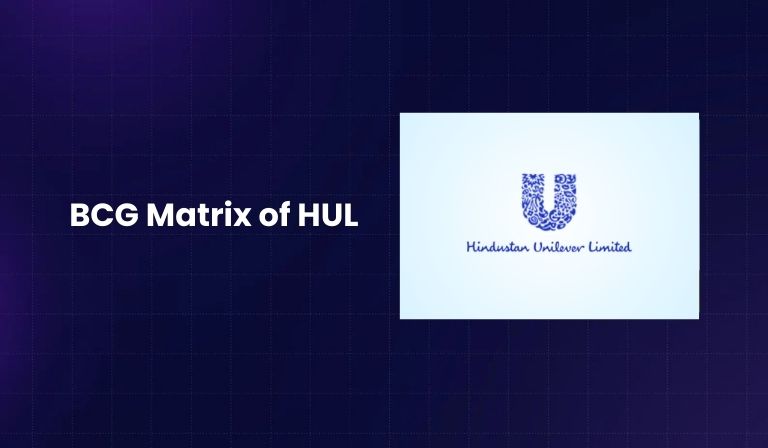Summary
Hindustan Unilever Limited (HUL) is the largest FMCG company in India, serving over 700 million customers with 50+ brands across categories like food, beverages, personal care, and home care. Managing such a vast portfolio requires strategic clarity: which brands to invest in, which to maintain, which to scale, and which to phase out.
The BCG Matrix is one of the simplest yet most powerful tools to understand this. It divides products into Stars, Cash Cows, Question Marks, and Dogs, based on market growth and market share.
This detailed analysis of HUL’s BCG Matrix will help you understand how the company balances short-term profitability and long-term growth.
What is the BCG Matrix?
The Boston Consulting Group (BCG) Matrix is a 2×2 framework that helps businesses categorize their products.
- Stars (High Growth, High Market Share): Leaders in booming industries. They bring big revenues but also need big investments to sustain dominance.
- Cash Cows (Low Growth, High Market Share): Established products in mature markets. They don’t require much investment but generate steady profits.
- Question Marks (High Growth, Low Market Share): Positioned in fast-growing markets but with small share. These are risky bets—if successful, they become Stars; if not, they turn into Dogs.
- Dogs (Low Growth, Low Market Share): Weak products in slow-moving markets. They drain resources and often need to be phased out.
Why is this useful for HUL? Because with 50+ brands across 14 categories, HUL needs to prioritize wisely.
HUL’s Business and Product Portfolio Overview
HUL’s products touch almost every Indian household. Its portfolio is divided into key categories:
- Home Care – Surf Excel, Wheel, Rin, Vim, Comfort, Domex
- Personal Care & Beauty – Dove, Lux, Lifebuoy, Sunsilk, Clinic Plus, Pond’s, Lakmé, Axe, Pepsodent, Close-Up
- Foods & Refreshments – Horlicks, Boost, Lipton, Brooke Bond, Bru, Kissan, Kwality Wall’s, Knorr
- Water & Purifiers – Pureit
Also Read: BCG Matrix of Tata Motors
This diversity ensures that HUL doesn’t rely on just one product line (unlike Apple’s dependence on iPhone). Instead, HUL manages both premium and mass-market brands—a unique strength in India’s FMCG landscape.
BCG Matrix of HUL: Complete Analysis
1. Stars (High Growth, High Market Share)
These brands are market leaders in industries that are still expanding. They are HUL’s growth engines.
Surf Excel
- Surf Excel dominates India’s premium detergent market.
- Its famous “Daag Acche Hain” (Dirt is Good) campaign connects emotionally with consumers.
- The detergent industry is still growing due to rising middle-class incomes, urbanization, and liquid detergent adoption.
- HUL continues to innovate (Surf Excel Matic, Surf Excel Liquid) to stay ahead of rivals like Ariel.
Why it’s a Star: It combines brand loyalty, premium pricing, and expansion in liquid formats, making it HUL’s strongest detergent bet.
Dove
- Dove has repositioned soap from “cleaning” to “skincare”—a clever strategy.
- With urban consumers moving toward premium, skin-friendly products, Dove has captured a niche.
- Competes with Pears (ITC), L’Oréal, and global skincare brands.
Why it’s a Star: In the booming personal care and premium skincare segment, Dove enjoys strong share and rising demand.
Brooke Bond Tea (Red Label, Taj Mahal, 3 Roses)
- Tea consumption is growing steadily in India.
- Brooke Bond Red Label appeals to families with themes of inclusivity and social harmony.
- Taj Mahal is positioned as premium tea, endorsed with the idea of quality and heritage.
Why it’s a Star: Tea is a growing market, and Brooke Bond dominates it with different sub-brands.
Horlicks (Nutrition Drinks)
- Acquired from GSK, Horlicks is now part of HUL’s nutrition portfolio.
- The health drinks category is growing in India, especially in South and East India.
- HUL leverages its distribution power to push Horlicks to new rural markets.
Why it’s a Star: Rising health awareness and a trusted legacy brand make Horlicks a long-term growth driver.
2. Cash Cows (Low Growth, High Market Share)
These brands dominate their segments but belong to industries with limited growth. They generate steady profits.
Lux
- Over 90 years old, Lux has been positioned as the “beauty soap of film stars.”
- Soap industry growth is slowing due to shift toward liquid body washes.
- Still, Lux has strong brand equity and rural reach.
Why it’s a Cash Cow: Mature industry, stable revenues, limited innovation.
Lifebuoy
- Lifebuoy is the world’s most sold hygiene soap.
- Growth in soap market is slow, but hygiene awareness post-COVID boosted sales.
- Strong rural penetration and affordability.
Why it’s a Cash Cow: Mass-market leader with consistent cash flow.
Pond’s
- Skin creams, powders, and cold creams under Pond’s have deep trust in India.
- However, younger consumers are shifting to trendy brands like Mamaearth and The Body Shop.
Why it’s a Cash Cow: Mature brand with declining growth but steady demand.
Wheel
- Rural detergent brand priced for affordability.
- Faces competition from Nirma and Ghadi but remains strong due to HUL’s distribution.
Why it’s a Cash Cow: Large share in rural detergent but limited future growth.
Pepsodent & Close-Up
- Together, they form HUL’s oral care portfolio.
- Compete with Colgate, the market leader.
- Market is highly penetrated, with low growth.
Why it’s a Cash Cow: Good recall and share, but limited industry growth.
3. Question Marks (High Growth, Low Market Share)
These brands exist in booming markets but haven’t yet captured dominance. They need heavy investments.
Kwality Wall’s
- Frozen dessert and ice cream industry in India is expanding.
- Competes with Amul, Mother Dairy, and Havmor.
- Strong urban presence but needs deeper rural distribution.
Why it’s a Question Mark: High-growth sector but brand still lags in scale compared to Amul.
Pureit (Water Purifiers)
- Growing demand for clean water in India.
- Market led by Kent and Aquaguard.
- Pureit is innovative but lacks strong market share.
Why it’s a Question Mark: Potential exists, but stiff competition and consumer skepticism limit its rise.
Axe (Deodorants)
- Once dominant among youth but now overshadowed by Fogg and Nivea.
- Deodorant category continues to grow rapidly in India.
Why it’s a Question Mark: Needs repositioning to regain lost ground.
Lakmé Skincare
- Lakmé makeup is successful, but skincare faces tough rivals like L’Oréal, Himalaya, and Mamaearth.
- Younger consumers prefer natural, organic alternatives.
Why it’s a Question Mark: Huge growth potential in skincare, but brand struggles to dominate.
4. Dogs (Low Growth, Low Market Share)
These products don’t contribute significantly to revenues and may drain resources.
Rexona Soap
- Lost relevance due to overlap with Lux and Dove.
- Soap market growth is limited.
Why it’s a Dog: Weak differentiation and low consumer demand.
Axe (Certain SKUs)
- Some variants failed due to changing consumer preferences.
- Market has moved toward “long-lasting” claims (like Fogg).
Why it’s a Dog: Brand perception mismatch with consumer needs.
Kissan (Jams & Sauces)
- Jams market is niche in India.
- Sauces face heavy competition from Maggi and Heinz.
Why it’s a Dog: Limited market growth and weaker brand relevance.
Bru Coffee
- Competes with Nestlé’s Nescafé.
- Instant coffee penetration in India is still low.
- Strong in South India but weak nationally.
Why it’s a Dog: Struggles to gain national scale against Nescafé.
Insights from HUL’s BCG Matrix
- Stars highlight HUL’s future bets. These brands require innovation + investment to stay ahead.
- Cash Cows are the profit engines that keep HUL stable. They fund new initiatives.
- Question Marks represent strategic dilemmas—HUL must decide whether to invest or withdraw.
- Dogs are legacy brands that need repositioning or divestment.
Advantages of BCG Matrix for HUL
- Resource Allocation: Helps HUL decide which brands to push, maintain, or cut back on.
- Portfolio Balance: Ensures HUL doesn’t rely only on Stars or Cash Cows.
- Decision-Making Tool: Simplifies complex choices in a portfolio with 50+ brands.
- Future Planning: Guides HUL on investing in high-growth categories like nutrition and personal care.
Limitations of the BCG Matrix for HUL
- Oversimplification: India’s market diversity means a single “high/low” classification is too basic.
- Synergies Ignored: Example: Surf Excel liquid + Rin bar work together in HUL’s ecosystem.
- Dynamic Market: Today’s Cash Cow can be tomorrow’s Dog (example: Wheel losing share).
- External Pressures: New D2C brands (Mamaearth, Patanjali) change consumer behavior quickly.
Conclusion
The BCG Matrix of HUL shows how India’s FMCG leader balances legacy brands and innovation bets:
- Stars (Surf Excel, Dove, Brooke Bond, Horlicks) are growth drivers needing constant investment.
- Cash Cows (Lux, Lifebuoy, Wheel, Pond’s, Pepsodent) ensure strong cash flows.
- Question Marks (Kwality Wall’s, Pureit, Axe, Lakmé skincare) are opportunities with risks.
- Dogs (Rexona, Bru, Kissan) highlight weak spots in the portfolio.
By using the BCG Matrix, we see HUL’s dual strategy: strengthen rural penetration with affordable brands while scaling premium, urban-focused products for future growth.
FAQs
What are HUL’s Cash Cow products?
Lux, Lifebuoy, Wheel, Pond’s, and Pepsodent are Cash Cows, generating consistent revenue despite limited growth.
Why is Surf Excel a Star in HUL’s BCG Matrix?
Because it dominates premium detergent, with rising demand for liquid and machine-wash products.
Which HUL products fall under Question Marks?
Kwality Wall’s, Pureit, Axe, and Lakmé skincare are Question Marks—high-growth sectors but low market dominance.
How does the BCG Matrix help HUL?
It helps HUL decide where to invest heavily, where to maintain, and where to divest or reposition.
Is the BCG Matrix relevant for FMCG giants like HUL?
Yes, despite being simplistic, it gives a clear snapshot of portfolio health and future direction.
A digital marketer with a strong focus on SEO, content creation, and AI tools. Creates helpful, easy-to-understand content that connects with readers and ranks well on search engines. Loves using smart tools to save time, improve content quality, and grow online reach.

